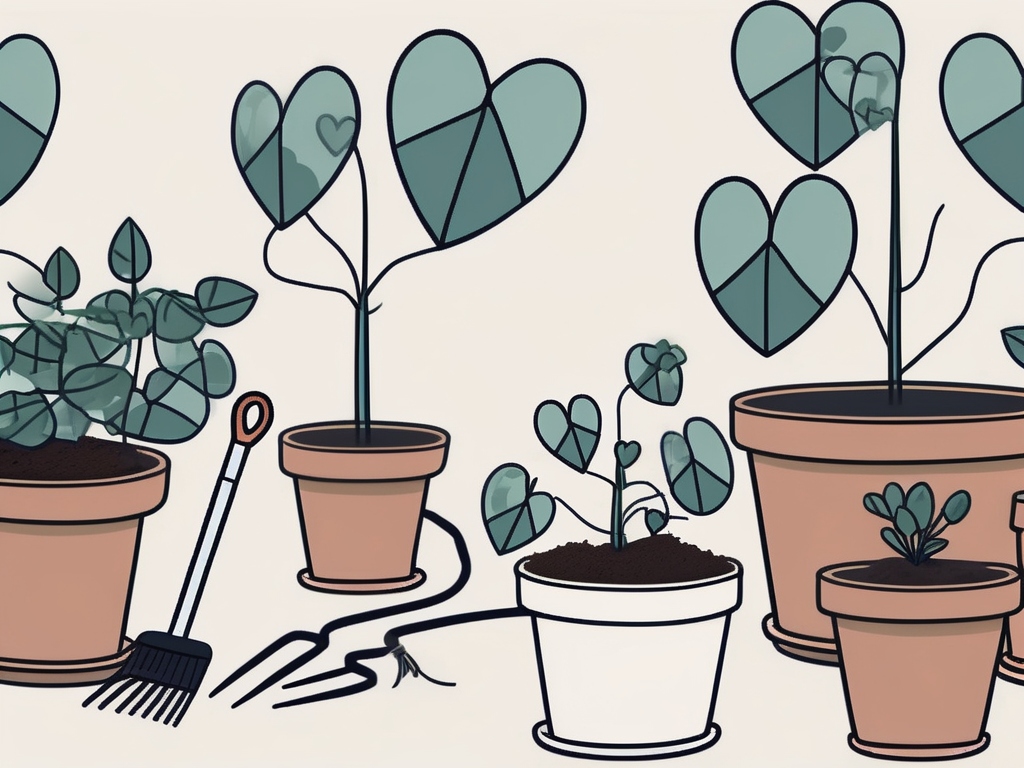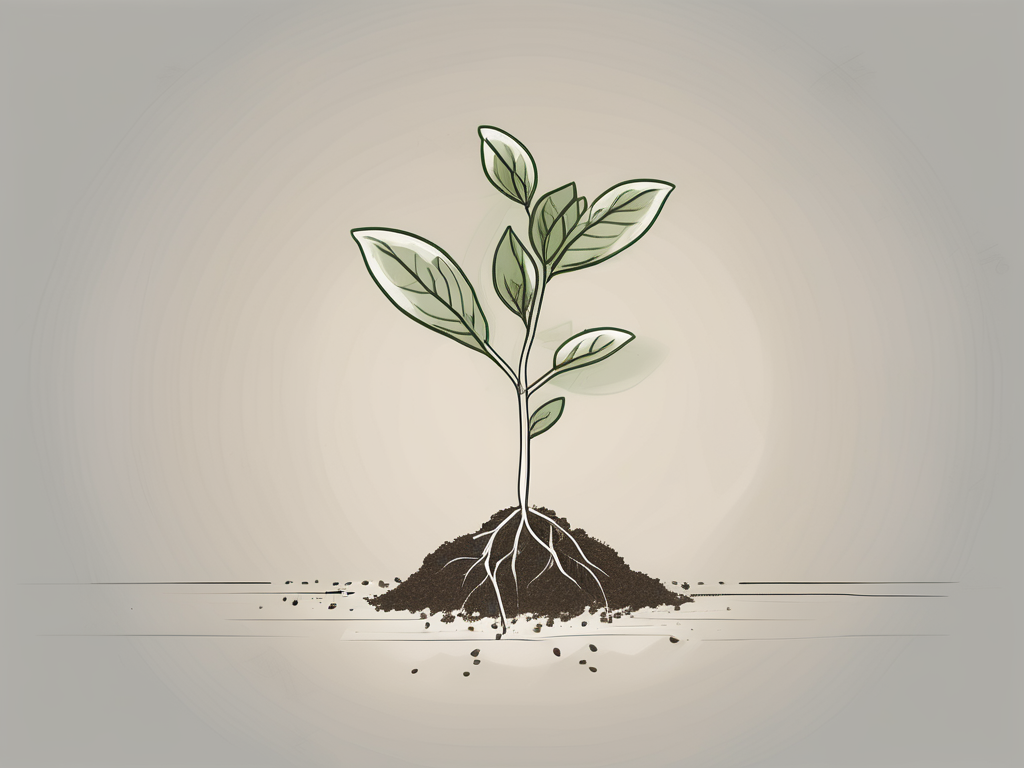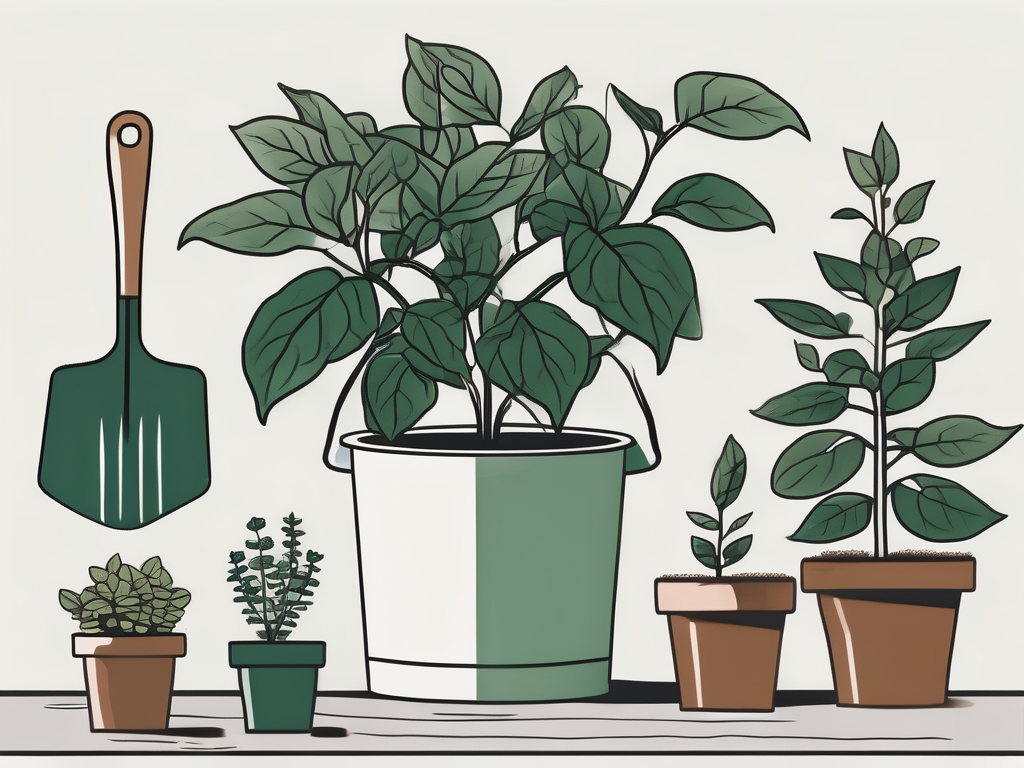
Repotting a string of hearts plant can feel like a big step, especially when you're trying to keep those delicate, trailing vines happy and healthy. These charming plants, with their heart-shaped leaves and cascading growth, make a stunning addition to any home.
In this article, we’ll guide you through everything you need to know about repotting your string of hearts, from understanding when it’s time to repot to choosing the right soil and pot. Whether you're a seasoned plant parent or a newbie, this guide will ensure your plant continues to thrive.
Why Repot Your String of Hearts?
Let’s start with the basics: why should you even think about repotting your string of hearts? Like any other plant, string of hearts can outgrow their pots. When this happens, the roots can become cramped, which can hinder growth and overall plant health. If you've noticed your plant looking a bit sad or its growth has stalled, it might be time for a change.
Aside from growth, there are other signs to watch for. If you see roots poking out of the drainage holes or if the soil dries out too quickly after watering, these are telltale signs your plant needs more space. Repotting gives the roots room to spread out, increasing the plant’s ability to absorb water and nutrients, which is essential for its health and vigor.
Benefits of Repotting
- Better Growth: A new pot with fresh soil provides more nutrients and space for roots to grow, leading to healthier, more robust plants.
- Improved Drainage: Fresh soil and a pot with good drainage holes can prevent waterlogging, which is crucial for a plant like string of hearts that prefers drier conditions.
- Refreshes Soil Nutrients: Over time, soil can lose its nutrient content. Repotting replenishes these nutrients, helping your plant thrive.
Repotting might sound like a hassle, but the benefits far outweigh the temporary disturbance to your plant. Plus, it's a great opportunity to check in with your plant and ensure it’s growing happily.
When to Repot Your String of Hearts
Timing is everything, especially when it comes to repotting. The best time to repot your string of hearts is during the spring and summer growing seasons. During these periods, the plant is actively growing, making it easier for it to recover from the shock of being moved to a new pot.
Avoid repotting in the winter months, as this is when the plant is typically dormant. Repotting during dormancy can stress the plant, potentially leading to slowed growth or even damage.
Signs It’s Time to Repot
- Root Bound: If you notice roots growing out of the bottom of the pot or circling the top of the soil, it’s time for a new home.
- Soil Issues: Soil that doesn’t retain moisture well or appears compacted can inhibit root growth.
- Growth Stagnation: If your plant hasn’t shown new growth in a while, repotting might give it the boost it needs.
Keep an eye on these signs, and you'll know when your plant is ready for a repotting session. Remember, a little attention goes a long way in keeping your string of hearts thriving.
Choosing the Right Pot
When it comes to picking a new pot, size and material matter. You want a pot that's only slightly larger than the current one—about an inch or two in diameter. This gives the roots space to grow without overwhelming them with too much soil, which can retain excess moisture and lead to root rot.
Material is another consideration. Terracotta pots are a favorite for string of hearts because they are porous and allow the soil to dry out between waterings—a must for this plant. Plastic pots can work too, but you'll need to be more cautious with watering as they retain moisture longer.
Drainage is Key
- Ensure Good Drainage: Whatever pot you choose, make sure it has drainage holes. This prevents water from pooling at the bottom, which can lead to root rot.
- Use a Saucer: Place a saucer under the pot to catch any excess water that drains through, protecting your surfaces.
Choosing the right pot might seem trivial, but it can make a big difference in how well your plant thrives. It's worth taking the time to find one that suits your plant's needs.
Preparing the Soil
When it comes to soil, string of hearts plants prefer a well-draining mix. A cactus or succulent potting mix works well, as it is designed to drain quickly. You can also create your own mix by combining regular potting soil with sand or perlite to improve drainage.
Adding some organic matter, like compost, can enhance nutrient content. However, be cautious not to overdo it, as too much organic material can retain excess moisture.
Homemade Soil Mix Recipe
- 1 part potting soil
- 1 part perlite or sand
- 1 part compost (optional)
Mix these components thoroughly to ensure even distribution. This mix provides the balance of drainage and nutrients that string of hearts need to thrive.
Step-by-Step Repotting Process
Now that you've got your pot and soil ready, it's time to get down to business. Repotting can be a bit messy, so lay down some newspaper or do it outside if possible.
Steps to Repot Your String of Hearts
- Water Beforehand: Water your plant a day or two before repotting. This makes it easier to remove from the pot and reduces stress on the plant.
- Gently Remove the Plant: Carefully turn the pot on its side and gently tap it to loosen the soil. Support the base of the plant as you slide it out.
- Examine the Roots: Check for any dead or rotting roots and trim them away. Healthy roots should be white or light brown.
- Place in New Pot: Add some soil mix to the bottom of the new pot. Place your plant in, ensuring it sits at the same level as before.
- Fill with Soil: Gently fill around the roots with your soil mix. Avoid compacting the soil too much, as this can restrict root growth.
- Water Lightly: Give your plant a light watering to help settle the soil. Be careful not to overwater, as the plant will need time to adjust.
And there you have it—a newly repotted string of hearts ready to flourish in its new home. Just remember to handle your plant gently and give it some time to adjust.
Post-Repotting Care
Once your plant is settled into its new pot, it’s crucial to provide the right care to help it bounce back. Initially, your string of hearts might look a little droopy or stressed, which is perfectly normal after repotting.
How to Care for Your Plant After Repotting
- Limit Direct Sunlight: Place your plant in a bright, indirect light spot. Avoid direct sunlight, which can stress it further.
- Moderate Watering: Hold off on watering for about a week to let the roots settle. Then resume a normal watering schedule, allowing the soil to dry out between waterings.
- Avoid Fertilizers: Don’t rush to fertilize immediately after repotting. Wait a month or so to give the plant time to adjust.
With the right care, your string of hearts will soon adapt to its new pot and continue to grow beautifully. Patience is key during this period, so give your plant some time to settle in.
Common Mistakes to Avoid
While repotting isn’t rocket science, there are a few common missteps that plant lovers often make. Being aware of these can help you avoid them and keep your plant healthy.
Mistakes to Watch Out For
- Overwatering: After repotting, it’s easy to overestimate how much water your plant needs. Remember, string of hearts prefer slightly dry soil.
- Choosing the Wrong Pot Size: Too large a pot can lead to excess soil retaining moisture, increasing the risk of root rot.
- Too Much Direct Sunlight: While these plants love bright light, direct sun can scorch their leaves. Keep them in filtered light to avoid this.
By keeping these pointers in mind, you can avoid potential pitfalls and ensure your string of hearts continues to thrive.
The Aesthetic Aspect of Repotting
Aside from health benefits, repotting is also a chance to refresh the look of your plant display. A new pot can breathe new life into your plant decor, adding an element of style to your space.
Styling Tips for Your String of Hearts
- Color Coordination: Choose a pot color that complements your room’s palette for a cohesive look.
- Mix and Match: Use pots of varying sizes and heights to create depth and interest in your plant arrangements.
- Hanging Displays: Take advantage of the string of hearts' trailing nature by using hanging planters for a cascading effect.
Repotting isn’t just about the practical side of things. It’s also an opportunity to get creative with how you display your plants, making your home a more beautiful and inviting space.
Final Thoughts
Repotting your string of hearts plant doesn’t have to be daunting. By understanding when and how to repot, choosing the right materials, and avoiding common mistakes, you’ll keep your plant healthy and thriving.
At Cafe Planta, we love helping you care for your plants. Whether you’re looking for unique houseplants, care accessories, or even plant-themed apparel, we’ve got you covered. If you have any questions, feel free to email us or reach out on Instagram. We're here to share our love of plants and help you create a thriving plant collection in your home.












